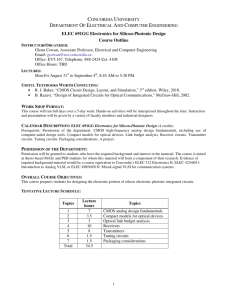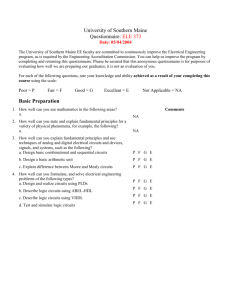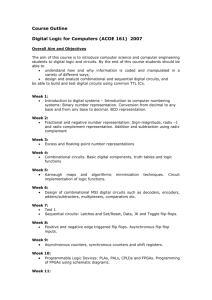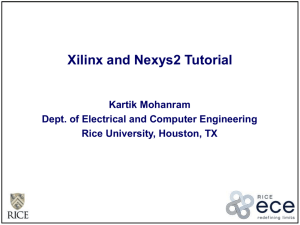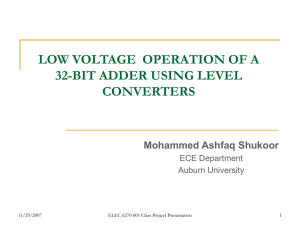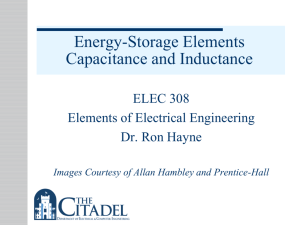Digital System & Microprocessors Laboratory
advertisement
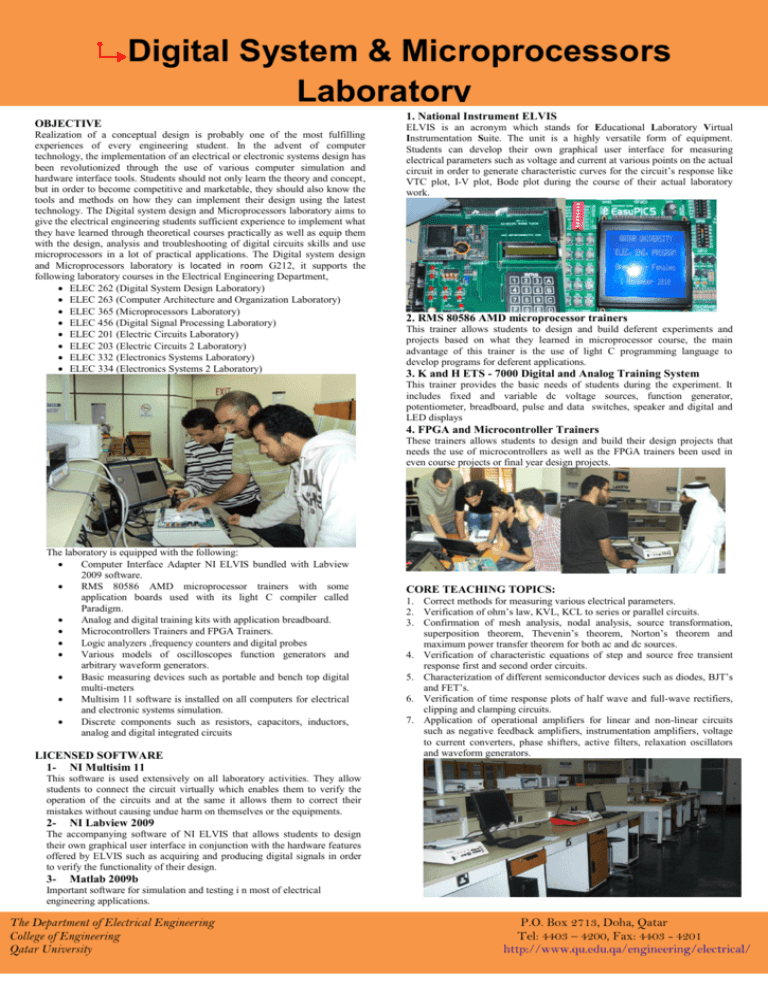
Digital System & Microprocessors Laboratory MAJOR EQUIPMENT IN THE LABORATORY: OBJECTIVE Realization of a conceptual design is probably one of the most fulfilling experiences of every engineering student. In the advent of computer technology, the implementation of an electrical or electronic systems design has been revolutionized through the use of various computer simulation and hardware interface tools. Students should not only learn the theory and concept, but in order to become competitive and marketable, they should also know the tools and methods on how they can implement their design using the latest technology. The Digital system design and Microprocessors laboratory aims to give the electrical engineering students sufficient experience to implement what they have learned through theoretical courses practically as well as equip them with the design, analysis and troubleshooting of digital circuits skills and use microprocessors in a lot of practical applications. The Digital system design and Microprocessors laboratory is located in room G212, it supports the following laboratory courses in the Electrical Engineering Department, ELEC 262 (Digital System Design Laboratory) ELEC 263 (Computer Architecture and Organization Laboratory) ELEC 365 (Microprocessors Laboratory) ELEC 456 (Digital Signal Processing Laboratory) ELEC 201 (Electric Circuits Laboratory) ELEC 203 (Electric Circuits 2 Laboratory) ELEC 332 (Electronics Systems Laboratory) ELEC 334 (Electronics Systems 2 Laboratory) 1. National Instrument ELVIS ELVIS is an acronym which stands for Educational Laboratory Virtual Instrumentation Suite. The unit is a highly versatile form of equipment. Students can develop their own graphical user interface for measuring electrical parameters such as voltage and current at various points on the actual circuit in order to generate characteristic curves for the circuit’s response like VTC plot, I-V plot, Bode plot during the course of their actual laboratory work. 2. RMS 80586 AMD microprocessor trainers This trainer allows students to design and build deferent experiments and projects based on what they learned in microprocessor course, the main advantage of this trainer is the use of light C programming language to develop programs for deferent applications. 3. K and H ETS - 7000 Digital and Analog Training System This trainer provides the basic needs of students during the experiment. It includes fixed and variable dc voltage sources, function generator, potentiometer, breadboard, pulse and data switches, speaker and digital and LED displays 4. FPGA and Microcontroller Trainers These trainers allows students to design and build their design projects that needs the use of microcontrollers as well as the FPGA trainers been used in even course projects or final year design projects. The laboratory is equipped with the following: Computer Interface Adapter NI ELVIS bundled with Labview 2009 software. RMS 80586 AMD microprocessor trainers with some application boards used with its light C compiler called Paradigm. Analog and digital training kits with application breadboard. Microcontrollers Trainers and FPGA Trainers. Logic analyzers ,frequency counters and digital probes Various models of oscilloscopes function generators and arbitrary waveform generators. Basic measuring devices such as portable and bench top digital multi-meters Multisim 11 software is installed on all computers for electrical and electronic systems simulation. Discrete components such as resistors, capacitors, inductors, analog and digital integrated circuits LICENSED SOFTWARE 1- NI Multisim 11 CORE TEACHING TOPICS: 1. Correct methods for measuring various electrical parameters. 2. Verification of ohm’s law, KVL, KCL to series or parallel circuits. 3. Confirmation of mesh analysis, nodal analysis, source transformation, superposition theorem, Thevenin’s theorem, Norton’s theorem and maximum power transfer theorem for both ac and dc sources. 4. Verification of characteristic equations of step and source free transient response first and second order circuits. 5. Characterization of different semiconductor devices such as diodes, BJT’s and FET’s. 6. Verification of time response plots of half wave and full-wave rectifiers, clipping and clamping circuits. 7. Application of operational amplifiers for linear and non-linear circuits such as negative feedback amplifiers, instrumentation amplifiers, voltage to current converters, phase shifters, active filters, relaxation oscillators and waveform generators. This software is used extensively on all laboratory activities. They allow students to connect the circuit virtually which enables them to verify the operation of the circuits and at the same it allows them to correct their mistakes without causing undue harm on themselves or the equipments. 2- NI Labview 2009 The accompanying software of NI ELVIS that allows students to design their own graphical user interface in conjunction with the hardware features offered by ELVIS such as acquiring and producing digital signals in order to verify the functionality of their design. 3- Matlab 2009b Important software for simulation and testing i n most of electrical engineering applications. The Department of Electrical Engineering College of Engineering Qatar University P.O. Box 2713, Doha, Qatar Tel: 4403 – 4200, Fax: 4403 - 4201 http://www.qu.edu.qa/engineering/electrical/
